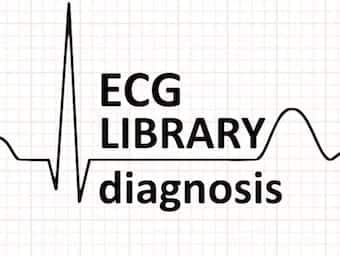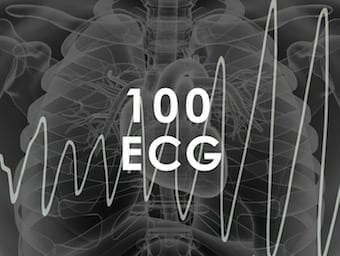
ECG changes in Pulmonary Embolism
The ECG changes associated with acute pulmonary embolism may be seen in any condition that causes acute pulmonary hypertension, including hypoxia causing pulmonary hypoxic vasoconstriction.

The ECG changes associated with acute pulmonary embolism may be seen in any condition that causes acute pulmonary hypertension, including hypoxia causing pulmonary hypoxic vasoconstriction.

This ECG is from a 47 year old female. She presents with acute onset severe dyspnoea. Her vitals signs are BP 95/42; RR 30; sats 88% (room air) Describe and interpret this ECG

A 23 year-old man had an episode of syncope at home. He is in severe respiratory distress, extremely pale, dripping with sweat. ECG Exigency

A 35 year-old female is brought to the emergency department after collapsing in a shopping centre. McConnell sign

An echo reveals a dilated and poorly functioning right ventricle with RV wall thickness of 6mm (≤5mm). You wonder whether this is a massive pulmonary embolism or just the changes of chronic pulmonary hypertension.

A classic respiratory case. This 25 year old female presented with worsening breathless. She has no previous medical problems.

70-year old patient presenting with chest pain, dyspnoea and dizziness. BP 90/50. SaO2 83% RA Describe and interpret this ECG.